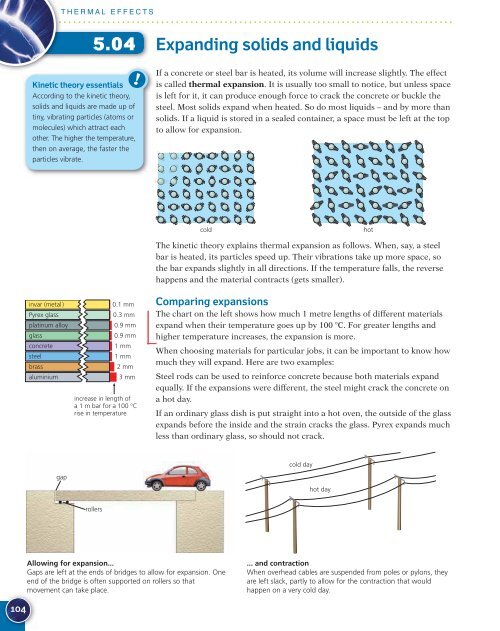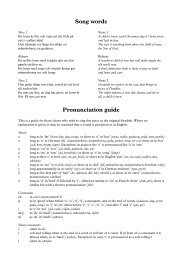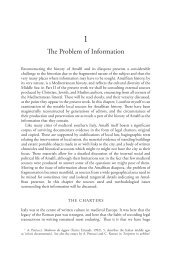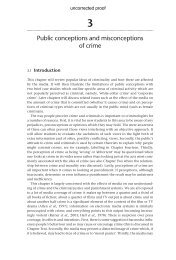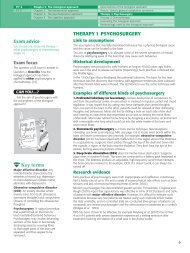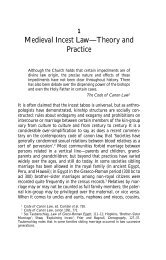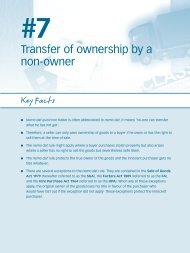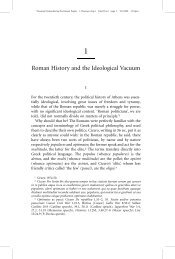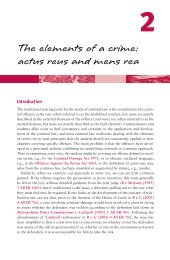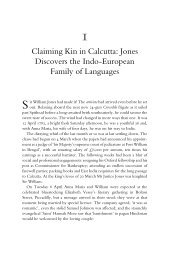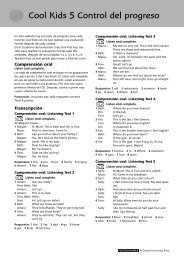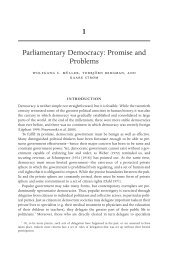Temperature (1) - Oxford University Press
Temperature (1) - Oxford University Press
Temperature (1) - Oxford University Press
You also want an ePaper? Increase the reach of your titles
YUMPU automatically turns print PDFs into web optimized ePapers that Google loves.
104<br />
invar (metal)<br />
Pyrex glass<br />
platinum alloy<br />
glass<br />
concrete<br />
steel<br />
brass<br />
aluminium<br />
THERMAL T<br />
EFFECTS<br />
gap<br />
5.04<br />
Kinetic theory essentials<br />
According to the kinetic theory,<br />
solids and liquids are made up of<br />
tiny, vibrating particles (atoms or<br />
molecules) which attract each<br />
other. The higher the temperature,<br />
then on average, the faster the<br />
particles vibrate.<br />
increase in length of<br />
a 1 m bar for a 100 °C<br />
rise in temperature<br />
rollers<br />
0.1 mm<br />
0.3 mm<br />
0.9 mm<br />
0.9 mm<br />
1 mm<br />
1 mm<br />
2 mm<br />
3 mm<br />
Allowing for expansion...<br />
Gaps are left at the ends of bridges to allow for expansion. One<br />
end of the bridge is often supported on rollers so that<br />
movement can take place.<br />
!<br />
Expanding solids and liquids<br />
If a concrete or steel bar is heated, its volume will increase slightly. The effect<br />
is called ca thermal expansion. It is usually too small to notice, but unless space<br />
is le left for it, it can produce enough force to crack the concrete or buckle the<br />
steel steel. Most solids expand when heated. So do most liquids – and by more than<br />
solid solids. If a liquid is stored in a sealed container, a space must be left at the top<br />
to al allow for expansion.<br />
cold<br />
The kinetic theory explains thermal expansion as follows. When, say, a steel<br />
bar is heated, its particles speed up. Their vibrations take up more space, so<br />
the bar expands slightly in all directions. If the temperature falls, the reverse<br />
happens and the material contracts (gets smaller).<br />
Comparing expansions<br />
The chart on the left shows how much 1 metre lengths of different materials<br />
expand when their temperature goes up by 100 �C. For greater lengths and<br />
higher temperature increases, the expansion is more.<br />
When choosing materials for particular jobs, it can be important to know how<br />
much they will expand. Here are two examples:<br />
Steel rods can be used to reinforce concrete because both materials expand<br />
equally. If the expansions were different, the steel might crack the concrete on<br />
a hot day.<br />
If an ordinary glass dish is put straight into a hot oven, the outside of the glass<br />
expands before the inside and the strain cracks the glass. Pyrex expands much<br />
less than ordinary glass, so should not crack.<br />
cold day<br />
hot day<br />
... and contraction<br />
When overhead cables are suspended from poles or pylons, they<br />
are left slack, partly to allow for the contraction that would<br />
happen on a very cold day.<br />
hot


